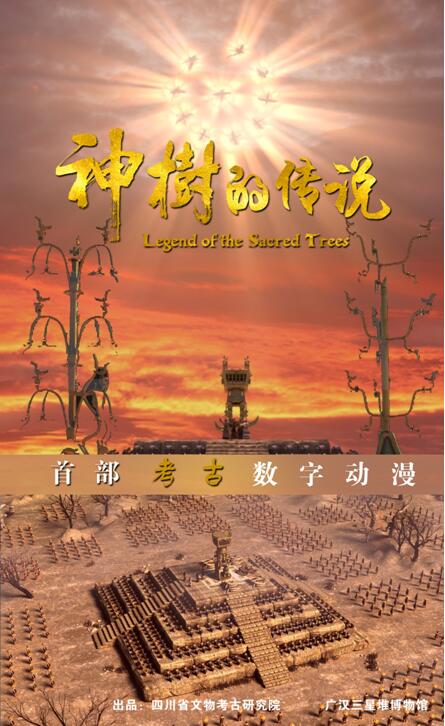Cultural relics find new life through power of digital media

The poster of the digitally animated film Legend of the Sacred Trees produced by Guanghan Sanxingdui Museum.
The question of how to bring cultural relics to life has found a new answer in the form of two digitally animated films that are captivating audiences and archaeologists alike.
Legend of the Sacred Trees, produced by Guanghan Sanxingdui Museum in the Southwest China’s Sichuan Province, is dedicated to the 30th anniversary of the protective excavation of the Sanxingdui site, the capital of ancient Shu civilization.
The story of cultural relics is not simply a children’s story. It is based on serious academic research. The animation is based on an excavated bronze tree nearly 4 meters in height that is one of the museum’s greatest treasures. Another character, the Golden Crow, is portrayed as a three-legged crow perched on the tree, and it is a kind of sun totem which can be found on many other relics and ancient books.
The rapid development of digital technology is playing an increasingly vital role in showcasing cultural relics, said He Yan, an expert in digitalization, adding that only by creating an experience based on the uniqueness of the relics, can their charms be fully revealed.
Digital animation has the power to bring relics to life and make them more attractive to the public, and that is why more and more centers for preserving cultural relics are adopting this style, she said.
The other animation, Enlightenment through Devil-Suppressing, was produced by the Dunhuang Research Academy (DHRA) based on a Dunhuang fresco that depicted how Buddha achieved enlightenment by suppressing the demon inside of himself.
“Through this animation, we are trying to highlight the humanistic values inherent in these works of art to more people using modern media technology,” said Chen Haitao, an associate research fellow from the Center for Studies on Cultural Creation at DHRA.
“The wisdom of the scholars studying these cultural relics is buried within the subtext, so it can be difficult for some to grasp,” Chen said, “so what we do here is to translate the texts into a visual form, making the ideas easier to comprehend.”
Zhang Chunhai and Rao Jia are reporters at the Chinese Social Sciences Today.

 PRINT
PRINT CLOSE
CLOSE